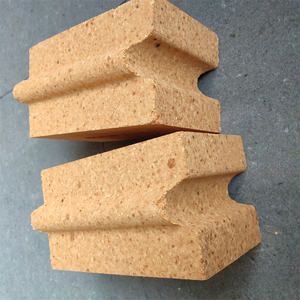Discover Premium Ceramic Products | Durability & Elegance United | Advanced Ceramics
1. Introduction
Just 24 hours ago, a major materials science breakthrough was announced by researchers at a leading U.S. national lab: they’ve developed a new sintering technique that enhances the thermal shock resistance of silicon carbide ceramics by over 30%. This innovation directly impacts the performance of silicon carbide crucibles and related high-temperature components, making them even more vital across metallurgy, aerospace, and semiconductor industries.

If you’ve ever wondered what makes a silicon carbide crucible so special—or why it’s preferred over other ceramic containers in extreme environments—you’re in the right place. In this article, we’ll break down everything you need to know about silicon carbide crucibles, their real-world applications, and how they fit into the larger landscape of advanced ceramics.
2. What Is a Silicon Carbide Crucible?
A silicon carbide crucible is a high-performance container made from silicon carbide (SiC), a compound of silicon and carbon known for its exceptional hardness, thermal conductivity, and resistance to thermal shock and chemical corrosion.
These crucibles are widely used in foundries and laboratories to melt and hold metals like aluminum, copper, and even precious alloys at temperatures exceeding 1,600°C (2,912°F). Unlike traditional clay-graphite crucibles, silicon carbide crucibles offer longer service life, faster heating, and minimal contamination of the molten material.
3. Key Properties That Make Silicon Carbide Crucibles Stand Out
- Extreme thermal conductivity: Heats evenly and quickly.
- High mechanical strength: Resists cracking under stress.
- Excellent chemical inertness: Doesn’t react with most molten metals or slags.
- Superior thermal shock resistance: Can handle rapid temperature changes without fracturing.
These traits make silicon carbide crucibles ideal not just for metal casting but also for crystal growth, glass processing, and high-temperature chemical synthesis.
4. Silicon Carbide vs. Other Advanced Ceramics

When comparing materials for high-heat applications, engineers often weigh silicon carbide against alternatives like boron carbide or silicon nitride.
Boron carbide vs silicon carbide: While boron carbide is harder and used in armor and abrasives, it’s more expensive and less thermally conductive than silicon carbide—making SiC better suited for crucibles and heat exchangers.
Silicon nitride, on the other hand, offers excellent fracture toughness and is used in components like silicon nitride crucible factory products, silicon nitride rings, custom silicon nitride heat shields, and silicon nitride plates. However, it generally has lower thermal conductivity than silicon carbide, which limits its use in applications requiring rapid, uniform heating.
For crucibles specifically, silicon carbide remains the go-to choice due to its balance of performance, cost, and manufacturability.
5. Beyond Crucibles: The Versatile World of Silicon Carbide Ceramics
Silicon carbide isn’t just for crucibles—it’s used across a stunning range of ceramic products, both industrial and consumer-facing.
In industrial settings, you’ll find rbsic silicon carbide tile blocks, silicon carbide ceramic columns, silicon carbide burner nozzles, silicon carbide bricks, and silicon carbide tubes—including silicon carbide thermocouple protection tubes, porous ceramic tubes, and mullite-reinforced variants like silicon carbide mullite tubes.
On the consumer side, there’s growing interest in kitchenware made from this durable material. Think silicon carbide ceramic baking dishes, casserole dishes with lids, pie dishes, salad bowls, butter dishes (even with lids!), and dinnerware like silicon carbide white ceramic plates or black ceramic plates. Brands like Staub have inspired demand for items such as silicon carbide baking dish staub–style pieces.

Artisans also craft handcrafted ceramic plates, children’s plates, and even holiday-themed items like silicon carbide christmas ceramic platters—blending function with aesthetic appeal.
6. Specialized Components: Discs, Pipes, and More
Silicon carbide’s versatility extends to precision components. Silicon carbide discs are used in grinding, sanding, and even as piezoelectric elements (e.g., silicon carbide piezo ceramic discs).
In plumbing and fluid control, silicon carbide ceramic disc taps, quarter-turn taps, and tap glands leverage the material’s wear resistance and smooth operation.
For high-temperature or corrosive environments, silicon carbide ceramic pipes and tubes are essential—used in furnaces, chemical reactors, and emission control systems. Whether it’s a silicon carbide ceramic tube for furnace use or a zirconia-reinforced variant, these components outperform metals and standard ceramics.
7. Manufacturing and Market Trends
The production of high-purity silicon carbide—and related materials like high purity silicon nitride powder—continues to grow, driven by demand in electric vehicles, renewable energy, and semiconductor manufacturing.
Recent advances in sintering (like the one mentioned earlier) are reducing costs and expanding applications. Meanwhile, custom fabrication services now offer everything from silicon carbide ceramic ramekins to large-scale silicon carbide ceramic serving platters, catering to both niche and mass markets.
8. Conclusion
From melting molten metal in a foundry to serving a holiday casserole at your dinner table, the silicon carbide crucible and its ceramic cousins are quietly revolutionizing how we handle heat, durability, and design. With ongoing innovations in material science and expanding applications across industries, silicon carbide ceramics are more relevant than ever—and likely to remain a cornerstone of advanced manufacturing for years to come.
Our Website founded on October 17, 2012, is a high-tech enterprise committed to the research and development, production, processing, sales and technical services of ceramic relative materials such as What. Our products includes but not limited to Boron Carbide Ceramic Products, Boron Nitride Ceramic Products, Silicon Carbide Ceramic Products, Silicon Nitride Ceramic Products, Zirconium Dioxide Ceramic Products, etc. If you are interested, please feel free to contact us.
